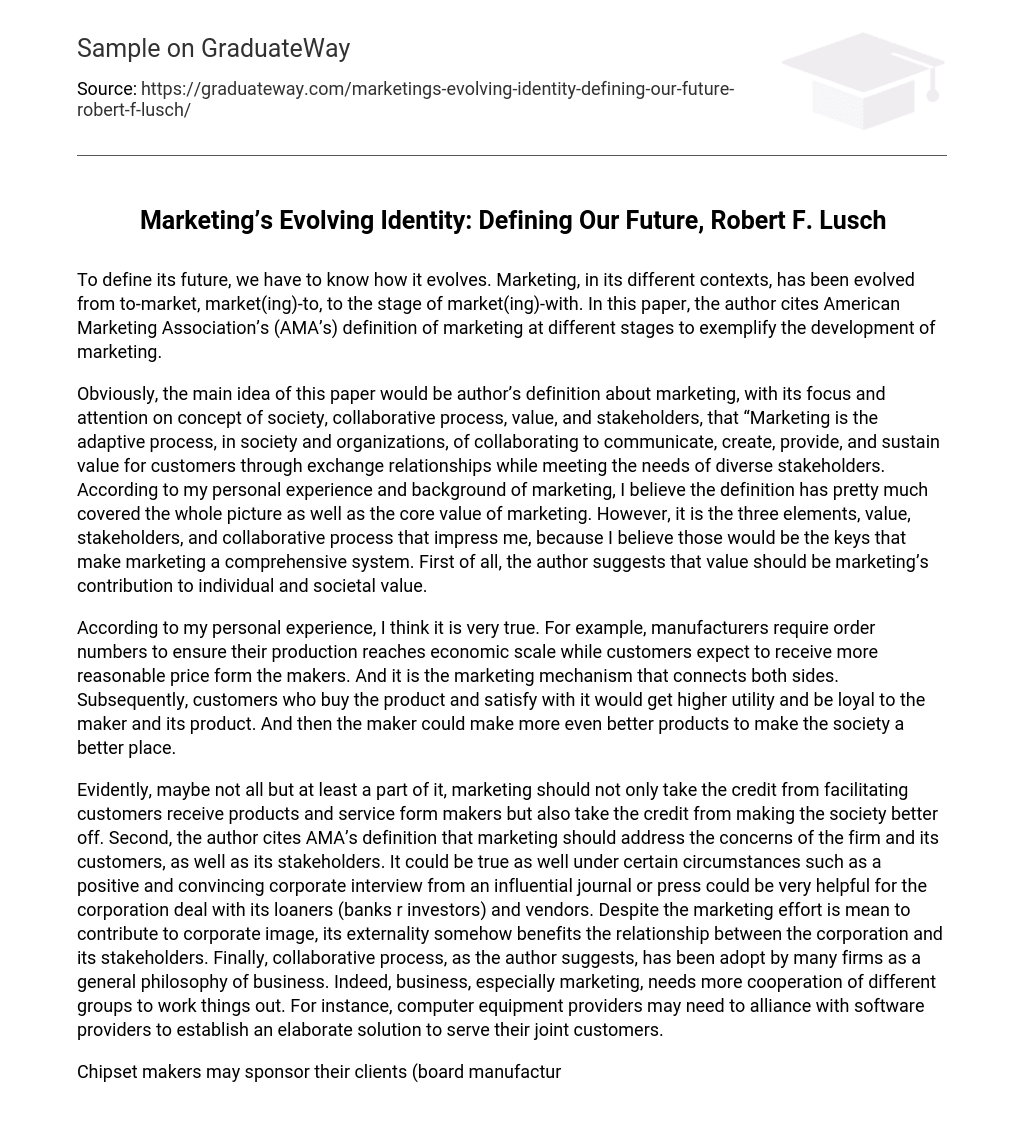To define its future, we have to know how it evolves. Marketing, in its different contexts, has been evolved from to-market, market(ing)-to, to the stage of market(ing)-with. In this paper, the author cites American Marketing Association’s (AMA’s) definition of marketing at different stages to exemplify the development of marketing.
Obviously, the main idea of this paper would be author’s definition about marketing, with its focus and attention on concept of society, collaborative process, value, and stakeholders, that “Marketing is the adaptive process, in society and organizations, of collaborating to communicate, create, provide, and sustain value for customers through exchange relationships while meeting the needs of diverse stakeholders. According to my personal experience and background of marketing, I believe the definition has pretty much covered the whole picture as well as the core value of marketing. However, it is the three elements, value, stakeholders, and collaborative process that impress me, because I believe those would be the keys that make marketing a comprehensive system. First of all, the author suggests that value should be marketing’s contribution to individual and societal value.
According to my personal experience, I think it is very true. For example, manufacturers require order numbers to ensure their production reaches economic scale while customers expect to receive more reasonable price form the makers. And it is the marketing mechanism that connects both sides. Subsequently, customers who buy the product and satisfy with it would get higher utility and be loyal to the maker and its product. And then the maker could make more even better products to make the society a better place.
Evidently, maybe not all but at least a part of it, marketing should not only take the credit from facilitating customers receive products and service form makers but also take the credit from making the society better off. Second, the author cites AMA’s definition that marketing should address the concerns of the firm and its customers, as well as its stakeholders. It could be true as well under certain circumstances such as a positive and convincing corporate interview from an influential journal or press could be very helpful for the corporation deal with its loaners (banks r investors) and vendors. Despite the marketing effort is mean to contribute to corporate image, its externality somehow benefits the relationship between the corporation and its stakeholders. Finally, collaborative process, as the author suggests, has been adopt by many firms as a general philosophy of business. Indeed, business, especially marketing, needs more cooperation of different groups to work things out. For instance, computer equipment providers may need to alliance with software providers to establish an elaborate solution to serve their joint customers.
Chipset makers may sponsor their clients (board manufacturer) for joint promotion, etc. Obviously, marketing plays a critical role to make all these happen. In summary, when marketing in both theory and practice is moving away from a marketing-to philosophy and practice toward marketing-with philosophy and practice, we should consider more about the three elements, value, stakeholders, and collaboration process, to define the scope of marketing without failing society and ourselves as a profession.





